 | « Back to article | Print this article |
The populist measures Mamata Banerjee took in the last five years helped her win the elections; some fear that this could set the tone of her government for the next five years, says Ishita Ayan Dutt.
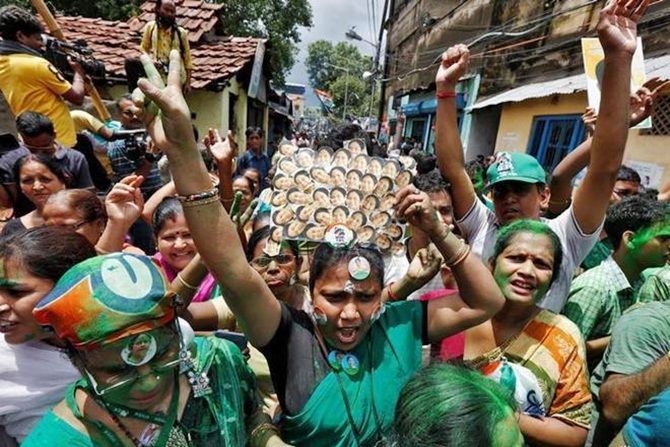
As the cameras started rolling on May 27 when Mamata Banerjee took oath as the chief minister of West Bengal for a second term, the question uppermost on people’s mind was: what direction will the state take in the next five years?
In 2011, West Bengal was seething with anger against a 34-year Left Front regime; the embers of the land agitation movements in Singur and Nandigram were glowing; Lalgarh had transcended from an ideological battlefield between the Left and ultra-Left to a fierce battle scene; civil society represented by a motley group of artists, poets, actors was screaming Paribartan chai (we want change); and Banerjee became the face of the movement.
The Left Front was routed in the elections to the state assembly. And Banerjee rode on the Ma Mati Manush (party slogan) wave to Writers’ Building, the state secretariat.
But political analyst Sabyasachi Basu Ray Chaudhury draws a distinction between the 2011 and 2016 elections.
“The 2011 mandate was an anti-Left mandate. But this time it is for Banerjee,” he says.
If that be the case then the current mandate is an emphatic endorsement of the doughty leader and her policies.
In a state where most parties have lost connect with the people, Banerjee may have rightly sensed the mood.
In the run-up to the elections, while battling the alleged corruption scandals of Narada, Saradha and the “syndicate raj” that nailed many of her party men, she had emphatically declared: “I am the candidate in all 294 assembly seats.”
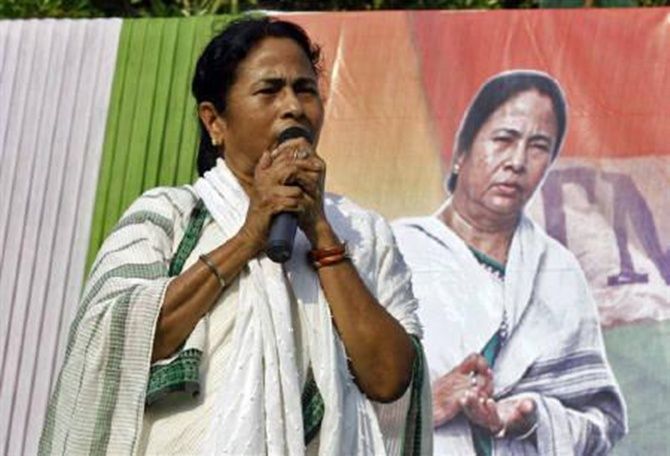
The Mamata magic
To say that it worked would be putting it mildly.
If the anti-Left mandate had got the Trinamool Congress 184 seats in 2011, the “vote for Mamata” campaign bagged it a much larger kitty of 211 seats five years later.
What worked in Banerjee’s favour?
It was the improvement and renovation of almost 2,000 km of roads, a substantial increase in electrification of poor households, better water supply and an unending list of freebies.
Of Bengal’s 90 million population, 80 million get rice at Rs 2 per kg.
State subsidy support on food grain has increased almost 12 times from Rs 516.32 crore in 2010-2011 to Rs 6,000 crore in 2016.
Some other items on the list: more than 10 million minority students were provided scholarship at a cost of Rs 1,921 crore; 97 per cent of the Muslim community was registered under the OBC category; 20,380 clubs and NGOs were provided “grants”; 3.3 million girl students were enrolled under the Kanyasree scheme that cost Rs 1,900 crore; four million boys and girls received bicycles; under the Yuvasree scheme, financial assistance of Rs 1,500 a month was extended to 100,000 job seekers; 60,000 folk artists were enrolled under a pension scheme; 21,000 cinema and television artists were covered under group medical insurance scheme.
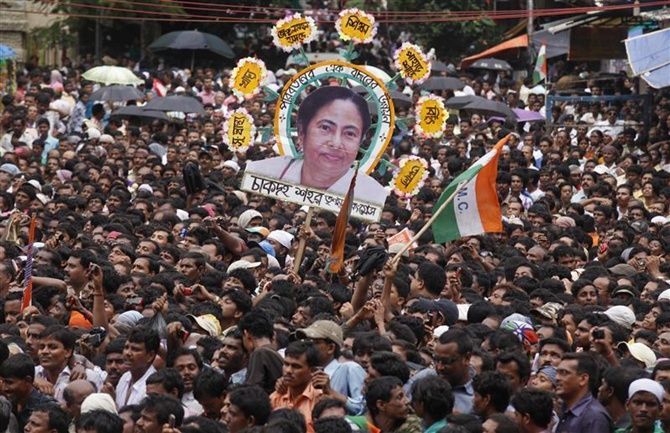
Since all this has fetched her tremendous returns, will Banerjee expand on it through her second term? And, in her quest for populism, will industry get the short shrift?
“It’s a Catch-22 situation for Banerjee. She can’t withdraw the sops. In fact, she will have to offer more sops to keep her electorate happy. Or, she could change some of her policies on industry to create jobs, but then people have endorsed her policies,” argues Basu Ray Chaudhury.
Dipankar Dasgupta, a former professor of economics at the Indian Statistical Institute, too underlines the importance of industry.
“Big industries create revenues for the state. It is possible that after this mandate in favour of Banerjee, major investors may look at Bengal more seriously. Why do investors invest in a state?
John Maynard Keynes had coined ‘animal spirits’ which refers to an emotional mindset. It's all about perception,” he explains.
In the last five years, Bengal has hardly seen any fresh big-ticket investment.
The past two investor summits have claimed to bag investment proposals in excess of Rs 200,000 crore (Rs 3 trillion), much of which has come from the Centre or central public sector companies.
Yet Bengal can’t be called a graveyard for industry.
Small and medium industries are flourishing in the state.
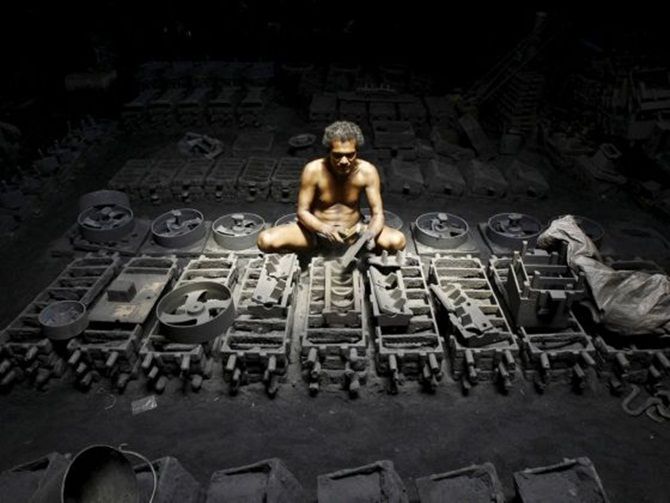
Bank lending to the micro, small and medium sectors has increased three-fold, from Rs 32,384 crore (Rs 323.84 billion) to Rs 91,572 crore (Rs 915.72 billion), in the last four years.
What has stood steadfastly between Bengal and large industries is Banerjee’s policy on land acquisition.
Her government made it clear from the very first day that it would not acquire any land for industry.
In a state where the average landholding is less than an acre that sure is a deterrent for large investors.
There were other hurdles too. Banerjee’s resolve not to grant special economic zone status to IT companies like Infosys has held back the project for the last five years; Infosys has already paid Rs 75 crore (Rs 750 million)for the land.
Last but certainly not the least, what has damaged investors’ perception is Banerjee’s stance on Singur, the erstwhile site for Tata Motors’ Nano project.
Her first major Cabinet decision in 2011 was to return 400 acres to the “unwilling” farmers of Singur, a move that earned Banerjee an anti-industry image.
It’s another story that the matter has been pending in court since.
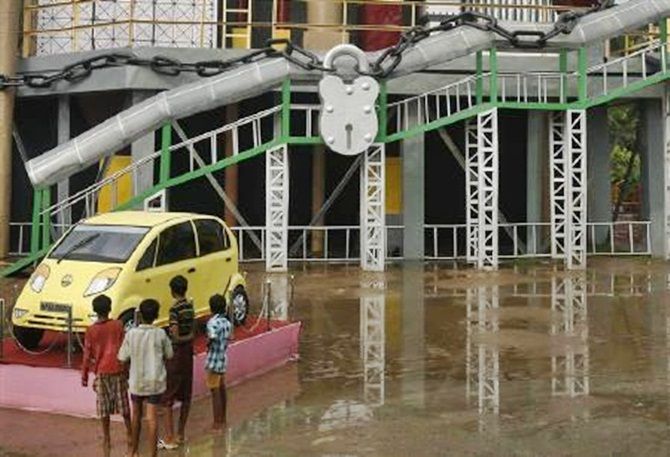
Time for change?
So is Mamata Banerjee 2.0 going to be any better for large industries?
Investors can take heart from the first Cabinet meeting in the second innings.
The focus of the state government for the next five years will be on the young generation, creation of more employment opportunities and overall development of quality of life for all, read out Finance & Industry Minister Amit Mitra after the meeting.
Of course, creating employment opportunities doesn’t necessarily mean that Banerjee will woo big industries on a war footing.
As Dasgupta points out, big industries generate revenues “but it’s the small and medium industries that create more jobs.”
But it’s still a sea change from the first Cabinet meeting in 2011, the high point of which was returning land in Singur. And investors are excited.
There is also some talk that the state may open dialogue with Infosys, which had kind of gone cold in the past four years.
“I will visit Infosys and resume dialogue after consultation with the Chief Minister,” says IT Minister Bratya Basu, who has set a target of creating 50,000 jobs in the next five years; Infosys could make that goal achievable in a shorter span.
But it all depends on the mercurial chief minister.
Will Banerjee relax her pre-electoral pledge and realise that not all SEZs require large tracts of land, more so when the land is owned by the government?
A promise is a big word, it is said. But even Machiavelli had said, “A prince never lacks legitimate reason to break his promise.”